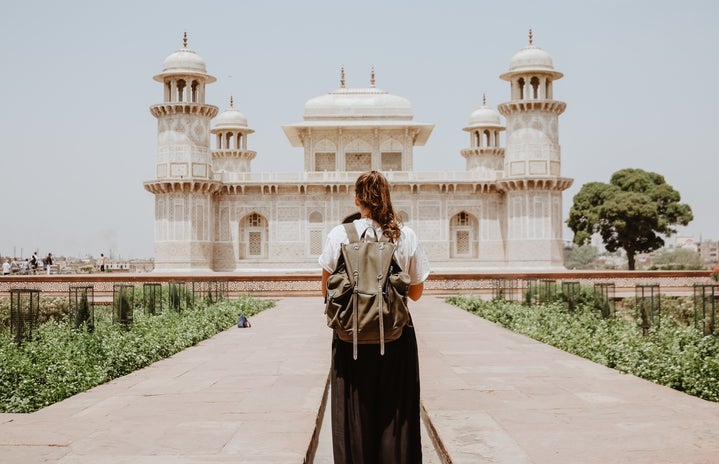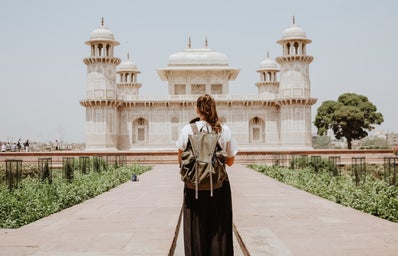Life is made of stories. Stories bring out emotions, ideas, and other worlds alive. It evokes a magical feeling that connects with humans— giving them comfort and affirmation in living. Storytelling is an interactive art that uses words and gestures to reveal the pictures and details of a narrative while stimulating the audience’s imagination. Good storytelling helps you forget your problems, forces you to think, and escape reality.
Dastangoi is one of those lost art forms of oral storytelling that came to India in the 16th century when the Mughal emperor Humayun returned from Iran. India gave new wings to this art form by absorbing Indian culture and tradition, and artists began using Urdu in their performances. It traveled from Delhi to Lucknow during the 19th century, becoming popular among both elites and commoners. Dastangoi became our own.
Derived from the Persian words ‘Dastan’, which means story, and ‘goi’ which means ‘to tell’. It was performed in several regions around Asia. Also known as ‘Kissa-goi’, a dastan has elements like razm (warfare and battles) and bazm (feast and celebration) in the story. When the art form came to India, two more elements were added- tilism (magic) and ayari (deception) as fairy tales. At least, one of these elements, or even all four of them has to be present in the tale. A dastan has an infinite length and it never ends. It can continue through hours, days, weeks, and even months, with various chapters, loops, and cycles within each cycle.
Dastangos were performers who performed dastans, epics that were typically and frequently performed orally in mehfils, where hundreds of people came together to listen to these tales. Mehfils were soirees where small-scale performances of dance, poetry, and classical music were made in a personal setting.
Akbar, the Mughal Emperor, used to tell stories about the Hamza dastans, who were only allowed in the royal court and kept in the harem. Impassioned by the Dastan-e-Amir Hamza, Akbar commissioned an illustrated book that eventually became the most valuable piece in the Mughal collection. The art form reached its zenith with the publication of the Amir Hamza Dastan, a 46-volume chronicle of the adventurer Amir Hamza. The ‘Hamzanama’ (the epic of Hamza), the earliest artistic endeavor inspired by Amir Hamza’s adventure and romantic stories, was composed of 1,200 painted panels.
At the height of the genre in the 17th century, colonization drastically altered expectations of Western poetry and literature and the inevitable decline of Dastangoi and other traditional art forms. In the 1830s, British declarations aimed to spread education in India, focusing on Western fashion and English as the primary language. English became the language of awareness, understanding, and literary expression, influencing various religions and cultures.
English classics were serialized in these Urdu vernacular newspapers and magazines, such as Avadh Akhbar and Akhbar-e-Alam established by alums of Delhi or Agra College, which promoted Western literature and aesthetics in the middle of the 1800s.
There is nothing in global fiction that compares to the Dastangoi tradition’s extraordinary fusion of creation and performance, which was a compendium of fairy tales, princes, romance, sorcerers, kings, warriors, and battles.
The Dastan-e Amir Hamza completely vanished from the public mind as a result of generational neglect throughout time. In 2005, filmmaker, author, and historian Mahmood Farooqui brought Dastangoi back to life. His main goal was to restore Indo-Islamic culture and literature from colonialism’s effects. In 2010, Syed Sahil Agha, an Indian writer, author, and storyteller, combined Dastangoi with singing and music, delivering his first professional performance and writing his first book, Dastan-e-Hind.
Nowadays, Dastans are adapted to a contemporary stage and new narratives rather than old reiterated stories are presented. Numerous works, including the most recent Dastan-e-Karn as Mahabharata (an Indian epic), Alice and the Wonderland, and Dastan-e-Taqseem-e-Hind on the partition, Dastan-e-Sedition on the Binayak Sen case and many more have become immensely popular in a new world. Dastan-e-goi serves as a literary and artistic bridge that unites many communities and allows them to experience the art form in its original form.
These are not just stories, these are powerful tributes that we stay alive for.


